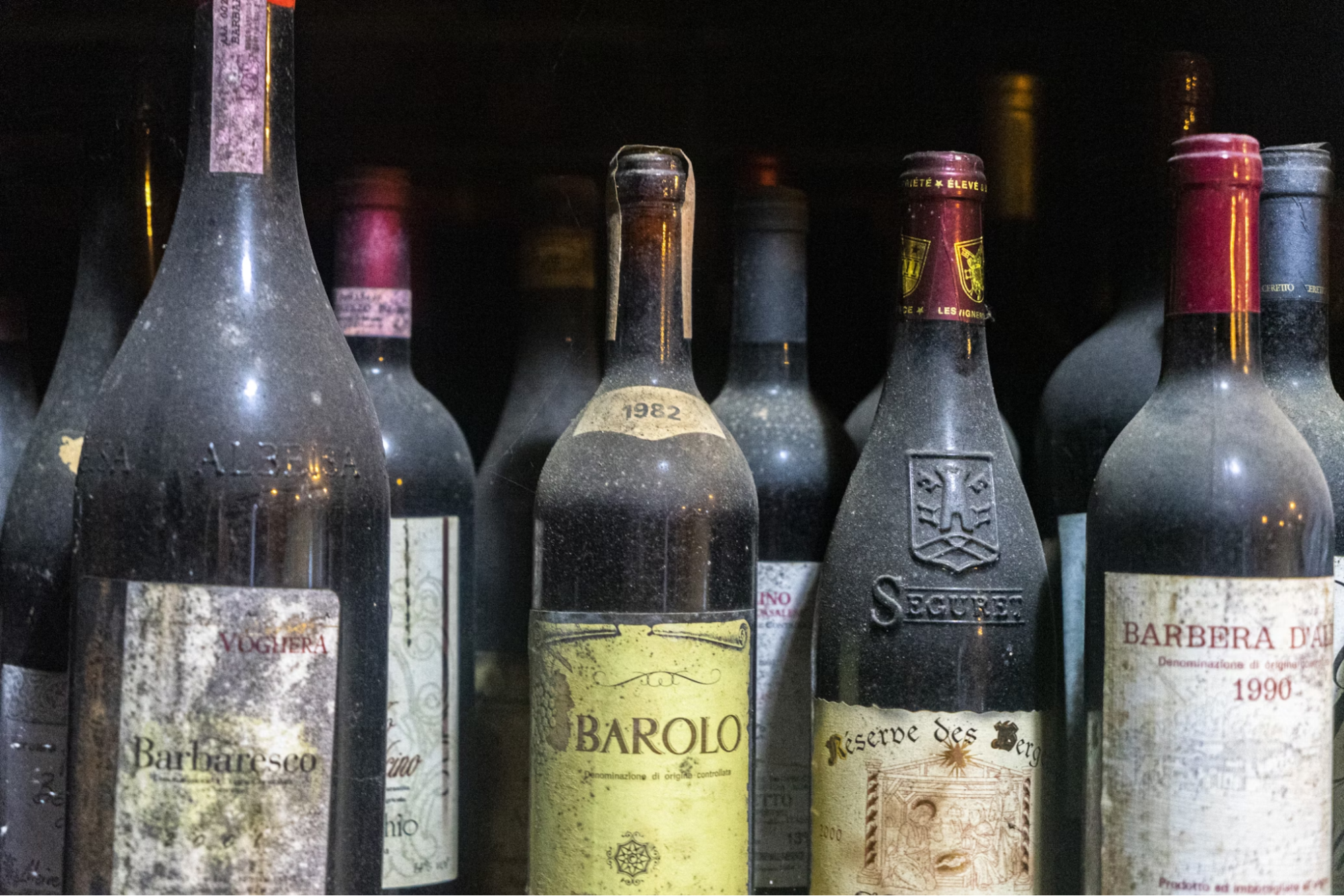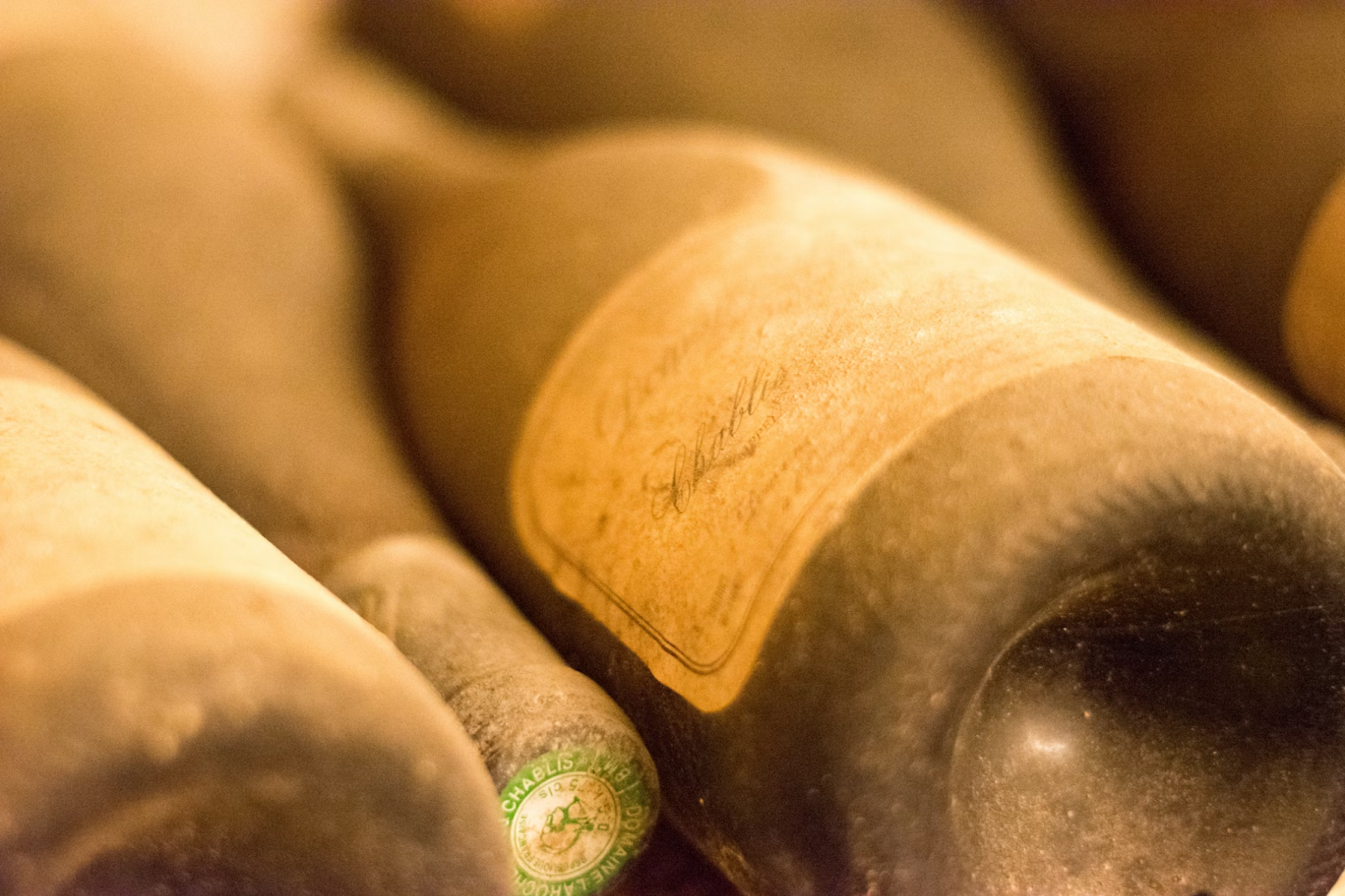- Wine Color/Type
- Top Occasions
- Unique Wines
- Surprise Me!
How to Know if a Wine is Age-Worthy
"Wine gets better with age,” as commonly heard. The evolution of a wine over time can bestow upon it a variety of flavors, enhancing its overall complexity. The science behind wine aging results from complex chemical reactions among acids, sugars, and phenolic compounds. However, not all wines should be stored in the cellar, as most are best enjoyed within the first few years of release.
Only a few truly improve with age. So, how to know if a wine is age-worthy? Let's explore the key characteristics that make a wine a candidate for aging.
Some wines improve with aging (Photo: Photo by Riccardo Bernucci on Unsplash)
High-Quality Grapes
A wine's potential to age gracefully is fundamentally tied to the quality of the grapes from which it originates. Good wines have a great mix of acidity, tannins, flavor, maturity, and alcohol level. This mix sets the stage for the wine to age and improve in the cellar.
The grape quality determines the output of the development of the fruit flavors. As the bottle ages, the fruity notes disappear. This sets the overall foundation of making a wine age-worthy.
High in Acidity
One of the paramount features of an age-worthy wine is its high acidity. Wines with high acidity tend to endure the test of time, providing a backbone that prevents them from falling flat as they age. Yet, not all sparkling wines are destined to age well. However, a drastic decline in acidity is a signal that the wine should be enjoyed soon.
High in Tannins
Tannins, found in grape skins, seeds, and stems, play a pivotal role in red wine's aging potential. Responsible for the wine's drying texture, or astringency, tannins act as natural preservatives. During the aging process, these compounds attract other molecules, contributing to the development of nuanced aromas, known as "tertiary notes'' such as leather, earth, and mushrooms. The tannin structure also mellows, which can improve the overall structure of the wine, enhacing the enjoyment.
The quality of the tannins should always be considered. High bitter and harsh tannins with a "greenish" flavor may not benefit from aging. It is said that the "Greenish" notes remain green, which may not enhance the overall enjoyment of the wine.
If the tannins are high, ripe and somewhat chalky or support a grounded mouthfeel, they might be adequate to support the aging potential of the wine. Commonly those structures are found in Burgundy, Bordeaux or other high quality dry red wines.
High in Sugar
Much like tannins, sugar acts as a natural preservative in wine. Dessert wines or fortified wines, with their elevated sugar content, often have remarkable longevity. The slow caramelization of sugar over time results in a gradual reduction of sweetness, developing complex flavors.
Winemaking Techniques
Wines made in certain ways tend to have better aging potential. For example, wines aged in barrels for an extended period of time benefit from the stabilizing influence of the vessels and the slow oxygenation process. Wines that spend months or even a year in barrels usually age better than those with short aging in stainless tanks.
Some winemakers allow the wines to mature and develop in the bottle, before they are released to the market. This is common practice in Spain, especially in Rioja or Ribera del Duero.
Wines That Stand the Test of Time
Several varietals and regions are known for producing age-worthy wines:
Cabernet-Based Wines/Bordeaux Red Blends
Cabernet Sauvignon, renowned for its high acidity and tannins, excels with age. A traditional Bordeaux blend usually includes Cabernet Sauvignon and Merlot, along with Cabernet Franc, Malbec, and Petit Verdot. It is aged in barrels for a long time, which helps it develop a smoother texture and a richer taste.
[insert:wine:the-hess-collection-mount-veeder-estate-cabernet-sauvignon-1988]
Burgundy
Top Burgundy wines, both red and white, highlight the aging potential of Pinot Noir and Chardonnay. While Pinot Noir is not as tannic as Cabernet Sauvignon, the high acidity ensures the ageability of Burgundy, especially when sourced from the best vineyards.
Chablis, known for its high acidity, is suitable for aging (Photo: Marco Mornati, Unsplash.com)
Barolo & Barbaresco
Nebbiolo, found in Barolo and Barbaresco wine regions, offers a high acidity, tannins, and alcohol. Extended oak aging complements these characteristics, making these wines some of the world's longest-living. Iconic Barolos may require two decades or more to reach their prime.
[insert:wine:produttori-del-barbaresco-barbaresco-2006]
Brunello di Montalcino & Rioja
Sangiovese-based Brunello di Montalcino and Tempranillo-based Rioja, both high in acidity and benefiting from barrel aging, demand significant cellar time. Aging requirements, dictated by law or tradition, contribute to their reputation as age-worthy wines.
[insert:wine:biondi-santi-brunello-di-montalcino-1978]
Malbec, Tannat, Aglianico
Malbec, Tannat, and Aglianico wines are often forgotten for aging, but they have strong tannins, acidity, and can age in barrels. From Cahors to Taurasi, these varietals create full-bodied, rich, and powerful reds with impressive aging potential.
[insert:wine:chateau-montus-madiran-1998]
Riesling & Chenin Blanc
Although wine aging is often more related to red than white, there are some amazing dry white wines that can last for decades. Riesling and Chenin Blanc, versatile and underappreciated, boast searing acidity that allows for extended aging.
[insert:wine:joh-jos-prum-bernkasteler-badstube-riesling-kabinett-2011]
Champagne
Contrary to popular belief, Champagne can indeed age gracefully. Vibrant acidity and effervescence act as preservatives, and while the bubbles may diminish, the complexity of flavors intensifies with time.
[insert:wine:geoffroy-millesime-extra-brut-champagne-2000]
Dessert Wines
Hungarian Tokaji and Sauternes, with their high sugar content, exemplify the extreme age-worthiness of dessert wines. Caramelization of sugar over time enhances the complexity of these wines, offering a sensory journey.
Good to Know
Contrary to common assumptions, age-worthy wines are not exclusively reserved for the most expensive bottles. Any well-made wine possessing the aforementioned characteristics can age gracefully, proving that the beauty of aging transcends price.
Sylvia Ba
Latest articles


